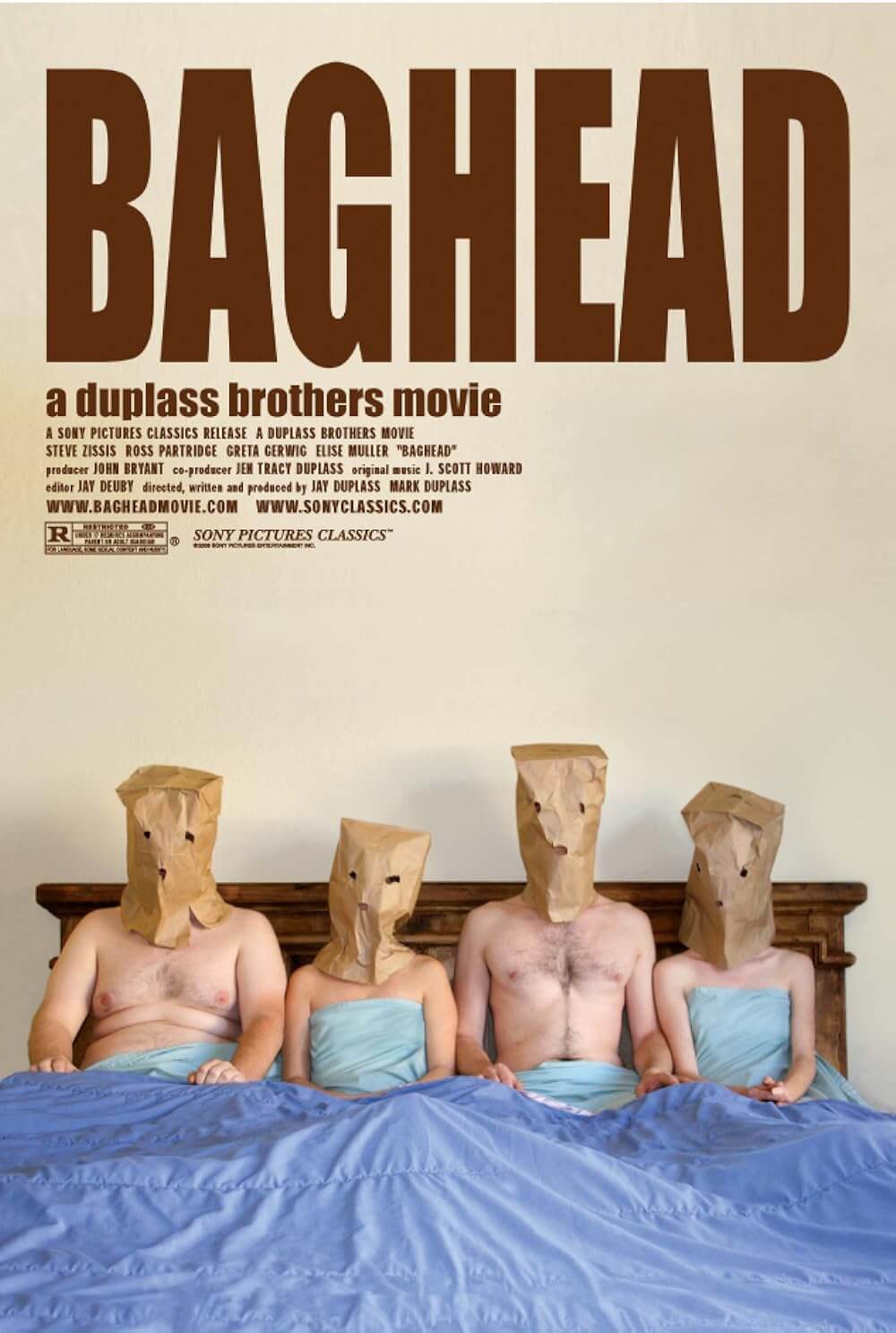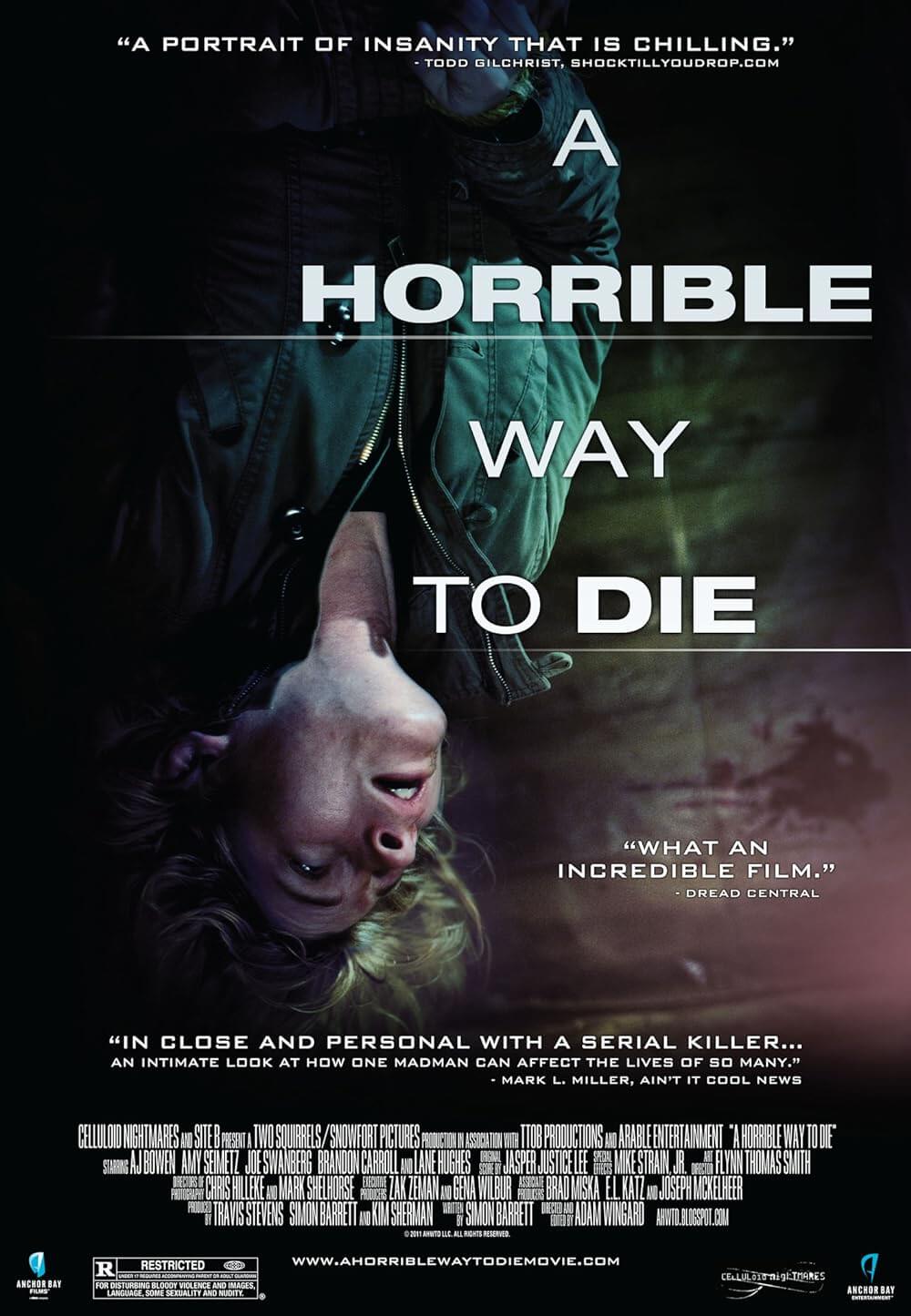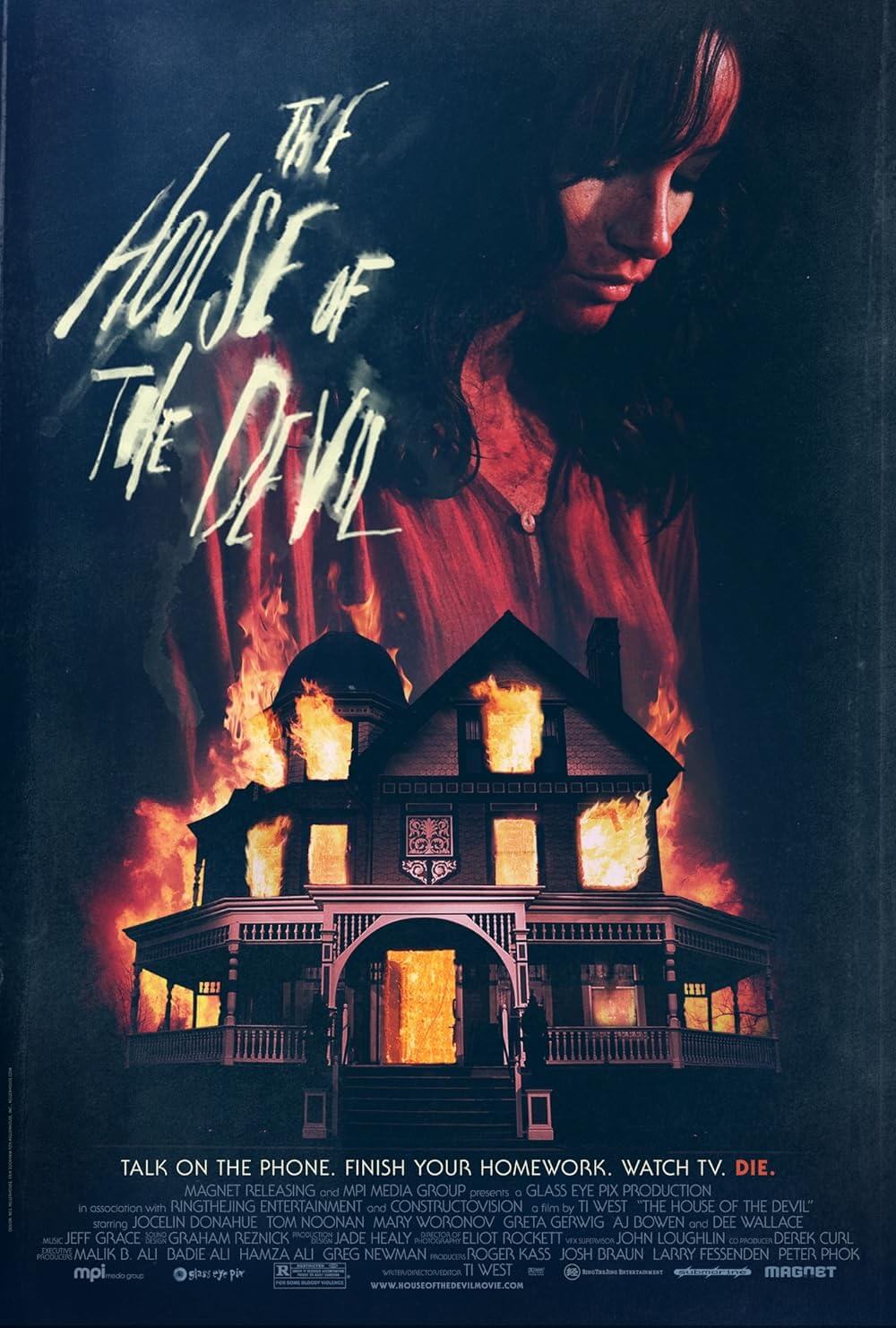Reader's Choice
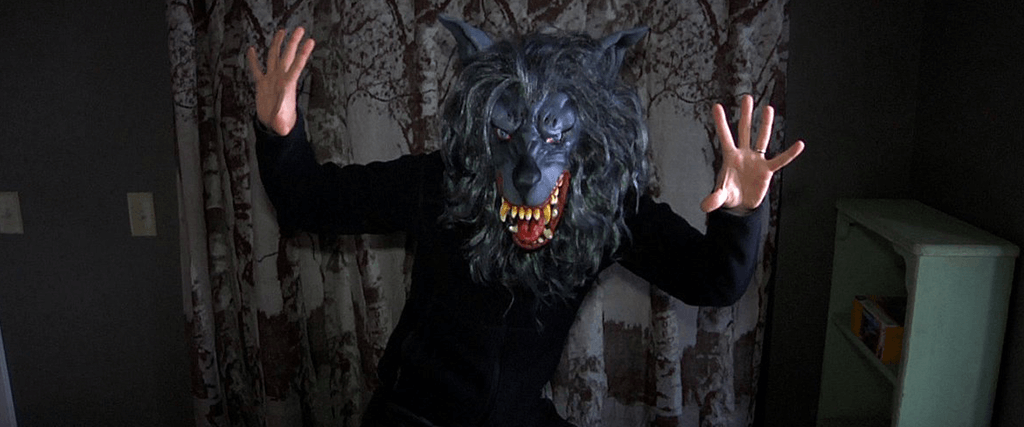
Creep
By Brian Eggert |
People are strange. Spend any amount of time out in the world, and you’re bound to encounter someone whose particular brand of strangeness gives you the heebie-jeebies. Sometimes it’s a coworker with off-putting mannerisms, making you uncomfortable in an indescribable way. Sometimes it’s a serial over-sharer who, unprompted, tells you about problems in their most intimate relationships, or worse, a physical condition they want you to diagnose. And as much as you hate to admit it, sometimes a person might also just not look right—you can’t explain why, but they make your internal alarm bells start to ring. They seem nice enough, but they’re also a little off somehow, and you instinctively want to get away. That’s what the protagonist in Creep, a clever and unsettling film about a Craigslist encounter from hell, should have done. Conceived by Patrick Brice and Mark Duplass, and directed by Brice, the 77-minute Netflix film from 2014 has since become a minor cult classic. Fittingly so; it’s among the funniest and scariest horror-comedies of this century, blending mumblegore independence with a found footage aesthetic to create a destabilizing, unforgettable experience.
A videographer responding to an ad, Aaron (Brice) drives into the San Bernardino Mountains for a job promising $1,000, though the specifics of what he’ll be asked to shoot remain unclear. “Discretion is appreciated,” the ad requests, which would be enough to ward off most of us. Aaron is alone, save for his camera: his confidant to which he narrates his progress and often looks into for a reaction shot. When he arrives at the address provided, Aaron ascends stairs to a yellow door with a turn-crank doorbell and peephole, but no one answers. Though slightly unnerved by the axe stuck in a stump nearby, Aaron resolves to sit in his car and wait. All at once, Josef (Duplass) bursts onto the scene, startling Aaron at his car door. Garbed in black jogging gear and with a mischievous smile on his face, Josef declares, “This is going to be a good day,” and he proceeds to hug Aaron, promising that, by the end of the day, they will have bonded so much that a hug will hardly seem out of the ordinary (though it clearly is now). Watching this scene play out, we think, Geez, Aaron must really need the money. What kind of person shows up for a gig like this? The answer, of course, is that Aaron is another kind of creep.
Inside, Josef explains why he hired Aaron, and the story is heartbreaking enough that Aaron momentarily dismisses the weirdness that just happened. Josef has a brain tumor and may only have a couple of months to live. His wife Angela will soon give birth to their first child, nicknamed Buddy, whom he will never meet. So Josef asks Aaron to shoot a day-in-the-life video, modeled after the movie My Life (1993). Further dispelling any apprehensions, Josef gives Aaron the money in advance—so at least it’s not a scam. Then Josef announces, “I’m gonna get in the tub…” Wait, what? Josef races upstairs and starts peeling off his clothes. Sensing Aaron’s apprehension, he tells him, “We’re going to go a lot deeper places than this.” While Josef pantomimes Buddy’s first “tubby time,” which, for some reason, unfolds against romantic candlelight, the viewer cannot help but wonder: Is this guy sincere and just awkwardly open-hearted, perhaps as a result of learning that his life is ending in a few months? Or is he fucking with Aaron? And if so, to what end?
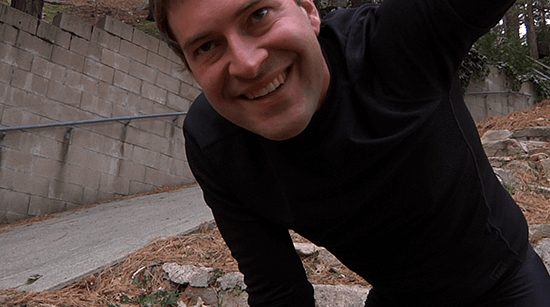 A pattern soon emerges: Josef asks Aaron to shoot intimate if cringey scenes that seem heartfelt and honest. But then Josef takes the moment too far, pretending, during the “tubby” for instance, to drown himself, only to pop out of the water to scare Aaron. This is Josef’s idea of a joke. “I’ve got a weird sense of humor,” he admits later. When they go for a hike in the nearby woods, hoping to find a heart-shaped spring that’s said to have healing properties, Josef runs ahead, leaving a confused Aaron behind, searching for his client. Just when it’s calm, Josef pops out from behind a tree and screams, scaring Aaron. “Sorry, I didn’t mean to do that,” Josef says. But of course he meant to—he did it. The strangest of Josef’s peculiarities is a werewolf mask he has named Peachfuzz (the original title of Creep before Brice realized it was perhaps too obscure and might distract the audience). Josef dons the mask and sings “a friendly wolf” song. Later in the film, Peachfuzz makes another appearance, with Josef rubbing his buttocks against the front door, performing a confounding dance that momentarily prevents Aaron from finally following his instincts to get the hell out of there. Scenes like this often prove hilarious and terrifying in the same absurdist gesture.
A pattern soon emerges: Josef asks Aaron to shoot intimate if cringey scenes that seem heartfelt and honest. But then Josef takes the moment too far, pretending, during the “tubby” for instance, to drown himself, only to pop out of the water to scare Aaron. This is Josef’s idea of a joke. “I’ve got a weird sense of humor,” he admits later. When they go for a hike in the nearby woods, hoping to find a heart-shaped spring that’s said to have healing properties, Josef runs ahead, leaving a confused Aaron behind, searching for his client. Just when it’s calm, Josef pops out from behind a tree and screams, scaring Aaron. “Sorry, I didn’t mean to do that,” Josef says. But of course he meant to—he did it. The strangest of Josef’s peculiarities is a werewolf mask he has named Peachfuzz (the original title of Creep before Brice realized it was perhaps too obscure and might distract the audience). Josef dons the mask and sings “a friendly wolf” song. Later in the film, Peachfuzz makes another appearance, with Josef rubbing his buttocks against the front door, performing a confounding dance that momentarily prevents Aaron from finally following his instincts to get the hell out of there. Scenes like this often prove hilarious and terrifying in the same absurdist gesture.
Duplass’ performance masterfully walks the line between menacing and earnest, maintaining the illusion that Josef might just be a goofball and nothing more. Duplass has such an authentic screen presence that you believe his story, or at least you understand why Aaron might, because the actor plays Josef as though he believes his lies in that moment. On a purely comedic level, Creep achieves unbearable, riotously bizarre laughs, including one that finds Josef using a stone to scratch “J+A” inside a heart on a large rock. Later, Aaron drugs Josef to mount his escape, and while passed out, the weirdo begins murmuring “Peachfuzz” and touching himself under the pants. And after Aaron escapes and returns home, Josef sends him packages. One of them is a box that contains a knife and a plush stuffed wolf—a gift so alarmingly odd that, much like Josef’s behavior, the only sane responses might be laughter or bafflement.
Creep is designed to be a hybrid of the mumblecore films Duplass makes with his brother, Jay, such as The Puffy Chair (2005), while also appealing to the audience usually associated with Jason Blum, whose production company Blumhouse began making horror movies in the 2000s with hits such as Paranormal Activity (2009). The Duplass brothers had already combined their knack for talky independent comedies with tormented scares on Baghead (2008)—not so much a straightforward horror film as an exploration of filmmaking and how fear lays bare our rawest selves. Propelled by handheld digital camerawork and two marvelously natural performances, Creep is less pure horror than a cringe comedy with disturbing undertones. The filmmakers concoct scene after unbearable scene of Josef’s behavior serving as a funny, albeit morbid warning sign of things to come—from Josef recording Aaron without his knowledge to his loaded question in the woods: “When you saw that axe… was there a small part you that thought I might kill you with it?” Later, the film transforms into an uneasy stalker yarn, with Aaron surviving his paid job only to have Josef begin taunting him with videos and packages sent to his home.
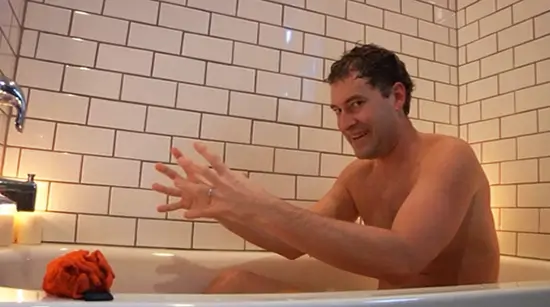 Made for a pittance (Duplass claimed the production cost around $500), the film emerged from conversations between Brice and Duplass about “weird people” and was largely improvised. They told ShockTillYouDrop in 2014 there were “10 to 12 permutations” of every scene because the filmmakers were trying things out to see what worked best with viewers. With a crew limited to three people and a digital camera, the filmmakers explored bare-minimum production values, shooting various iterations over a year. Then they showed a version to an audience, and later returned to correct or re-shoot scenes that weren’t playing as intended. If some viewers seemed uncomfortable while, at the same time, others laughed, Brice and Duplass knew that they had achieved something that walked the line between horror and comedy, inhabiting an ambiguous sweet spot where Creep lingers long afterward. After shuffling from one distributor to the next following its SXSW premiere, the film finally debuted on Netflix, where it earned a modest legacy among the streamer’s viewers who took a risk. While the shocker finale of Creep—with Aaron axed after all, and Josef’s recording of the incident added to his vast library of personal snuff films—seems rather gimmicky for the scenario that precedes it, the ending left room for a sequel, released in 2017.
Made for a pittance (Duplass claimed the production cost around $500), the film emerged from conversations between Brice and Duplass about “weird people” and was largely improvised. They told ShockTillYouDrop in 2014 there were “10 to 12 permutations” of every scene because the filmmakers were trying things out to see what worked best with viewers. With a crew limited to three people and a digital camera, the filmmakers explored bare-minimum production values, shooting various iterations over a year. Then they showed a version to an audience, and later returned to correct or re-shoot scenes that weren’t playing as intended. If some viewers seemed uncomfortable while, at the same time, others laughed, Brice and Duplass knew that they had achieved something that walked the line between horror and comedy, inhabiting an ambiguous sweet spot where Creep lingers long afterward. After shuffling from one distributor to the next following its SXSW premiere, the film finally debuted on Netflix, where it earned a modest legacy among the streamer’s viewers who took a risk. While the shocker finale of Creep—with Aaron axed after all, and Josef’s recording of the incident added to his vast library of personal snuff films—seems rather gimmicky for the scenario that precedes it, the ending left room for a sequel, released in 2017.
Brice and Duplass raise questions about our neighbors, the people we meet online, and those who would risk engaging with them. Creep doesn’t need a supernatural element or an unstoppable killing machine like so many slashers. The average person—or those who wear the mask of normalcy—is scary enough. So Duplass’ insidious character becomes instantly iconic, shrouded in a mystery that prompts the viewer to pose open-ended questions about Josef and his stories. Is there any truth to them, or has he completely fabricated everything? Either way, he’s broken in a way that we will never fully understand—the way anyone out there could be shattered inside, though we’d never know it. Our uncertainty turns Duplass’ otherwise pleasant screen presence into an everyman mask, no different than Michael Myers’ signature blank visage, in that both preserve the disturbing mystery of what lies beneath. That Josef need not wear a mask to conceal his identity is what makes him terrifying. It’s also what makes Creep such an essential horror film for today, and a grim look at humanity at its most peculiar and unsettling.
(Note: This review was originally posted to Patreon on October 24, 2023.)
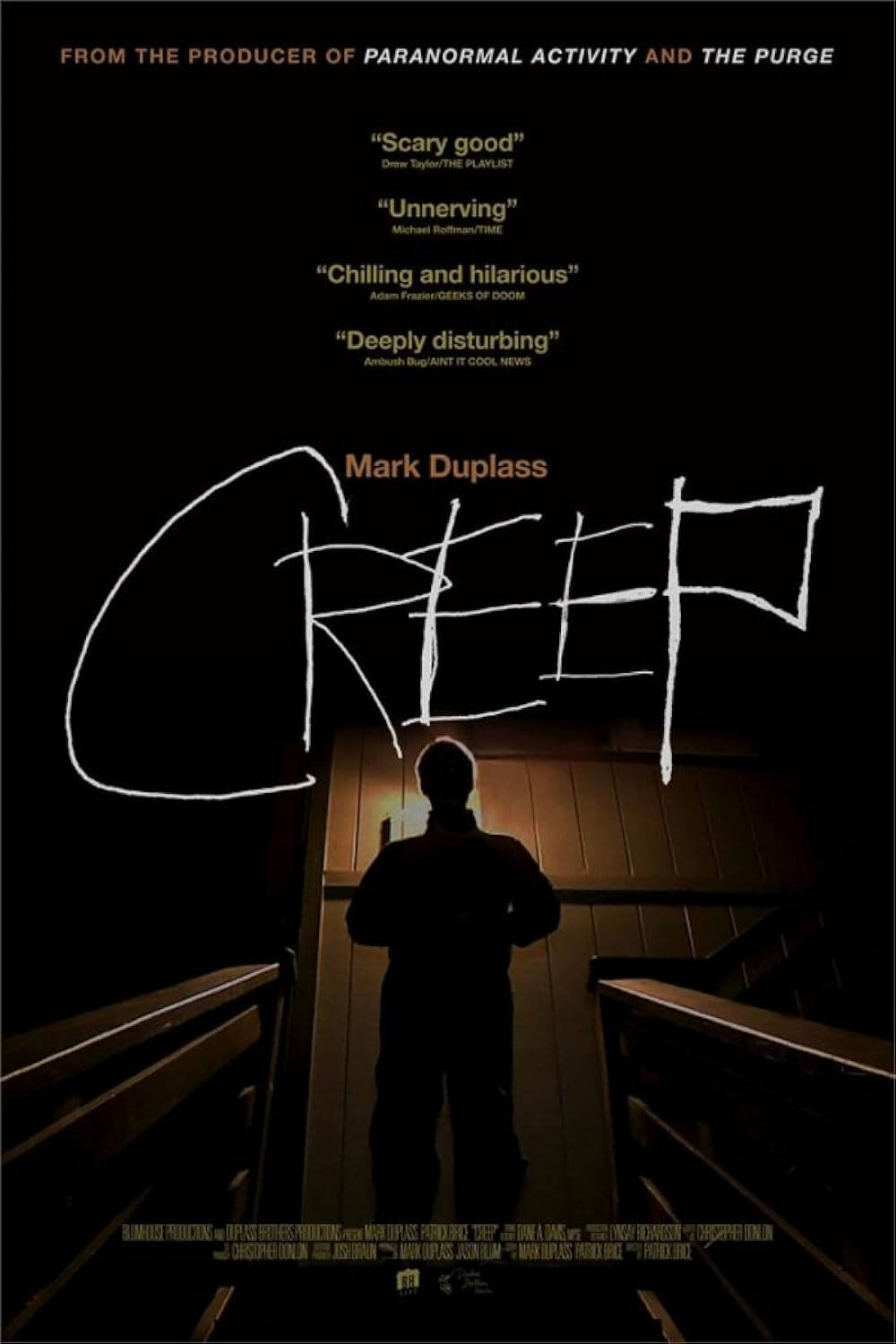
Thank You for Supporting Independent Film Criticism
If the work on DFR has added something meaningful to your love of movies, please consider supporting it.
Here are a few ways to show your support: make a one-time donation, join DFR’s Patreon for access to exclusive writing, or show your support in other ways.
Your contribution helps keep this site running independently. However you choose to support the site, please know that it’s appreciated.
Thank you for reading, and for making this work possible.
Brian Eggert | Critic, Founder
Deep Focus Review


